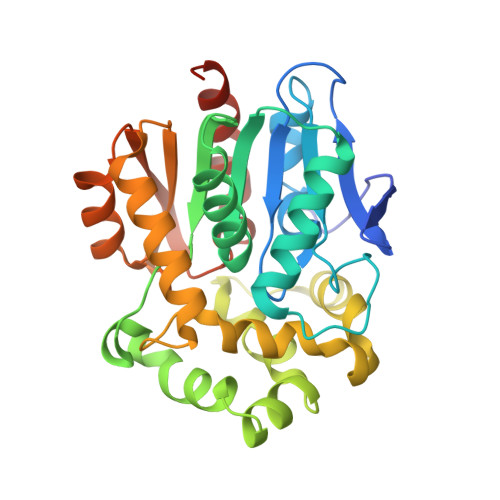A locally activatable sensor for robust quantification of organellar glutathione.
Emmert, S., Quargnali, G., Thallmair, S., Rivera-Fuentes, P.(2023) Nat Chem 15: 1415-1421
- PubMed: 37322101
- DOI: https://doi.org/10.1038/s41557-023-01249-3
- Primary Citation of Related Structures:
7ZBA, 7ZBB, 7ZBD - PubMed Abstract:
Glutathione (GSH) is the main determinant of intracellular redox potential and participates in multiple cellular signalling pathways. Achieving a detailed understanding of intracellular GSH homeostasis depends on the development of tools to map GSH compartmentalization and intra-organelle fluctuations. Here we present a GSH-sensing platform for live-cell imaging, termed targetable ratiometric quantitative GSH (TRaQ-G). This chemogenetic sensor possesses a unique reactivity turn-on mechanism, ensuring that the small molecule is only sensitive to GSH in a desired location. Furthermore, TRaQ-G can be fused to a fluorescent protein to give a ratiometric response. Using TRaQ-G fused to a redox-insensitive fluorescent protein, we demonstrate that the nuclear and cytosolic GSH pools are independently regulated during cell proliferation. This sensor was used in combination with a redox-sensitive fluorescent protein to quantify redox potential and GSH concentration simultaneously in the endoplasmic reticulum. Finally, by exchanging the fluorescent protein, we created a near-infrared, targetable and quantitative GSH sensor.
Organizational Affiliation:
Institute of Chemical Sciences and Engineering, Ecole Polytechnique Fédéral de Lausanne, Lausanne, Switzerland.

















